Where to buy 828 Mk2?
Less
Tech. sheet
- Manufacturer: MOTU
- Model: 828 Mk2
- Series: 828
- Category: FireWire audio interfaces
- Other names:828 mk2, 828mk2, 828 mk 2, 828 mkii, 828mkii
- 8 analog i/o (Jack 6,25)
- 2 Monitor/Main outs (Jack 6,25)
- 8 ch ADAT i/o (can also be used as s/pdif optical)
- ADAT sync
- Stereo s/pdif coaxial i/o (rca)
- 2 Mic/line in (Neutrik combo XLR/TRS) with 48v phantom power switch
- Front panel headphone out
- Backlit display
- Front panel programming
- 2 rear panel sends from the Mic/line in to allow inserting a compressor between the send and other line inputs
- 2 Firewire 400 ports
- SMPTE Sync
- Front panel metering for all analog inputs, s/pdif and mic inputs and main outs
- Sample rate : 96Khz max
- MIDI i/o
All parameters can be modified/configured from the front panel or using Cue-Mix software.
»
User reviews
4.3/5(66 reviews)
5
53 %
4
30 %
3
9 %
2
5 %
1
3 %
rack it up!
Published on 02/23/12 at 19:58The MOTU 828 MK2 is a 14 x 10 audio and MIDI interface designed for the home studio DAW that will support up to 96 kHz. For such a little unit, it’s actually got a good amount of versatility and options. It’s a firewire based unit, consisting of two ports. There are two microphone preamps, each of which have dual ¼”/XLR jacks and trim knobs, built in phantom power, and a pad for each as well. As far as other connections go, it has six other ¼” inputs, eight ¼” outputs to correspond with each of the inputs, and ¼” main stereo outputs for sending your sound to your monitors. It also has a MIDI input and output and the same for S/PDIF as well. There’s also a ¼” jack for a headphone input...…
Read more
The MOTU 828 MK2 is a 14 x 10 audio and MIDI interface designed for the home studio DAW that will support up to 96 kHz. For such a little unit, it’s actually got a good amount of versatility and options. It’s a firewire based unit, consisting of two ports. There are two microphone preamps, each of which have dual ¼”/XLR jacks and trim knobs, built in phantom power, and a pad for each as well. As far as other connections go, it has six other ¼” inputs, eight ¼” outputs to correspond with each of the inputs, and ¼” main stereo outputs for sending your sound to your monitors. It also has a MIDI input and output and the same for S/PDIF as well. There’s also a ¼” jack for a headphone input and metering is done with the LED screen on the front panel. It’s powered by either your computer via bus power, or with a nine volt power supply. The 828 MK2 is also rackable.
UTILIZATION
As long as you understand the characteristics and features involved here, you’re going to be able to operate the 828 MK2 without any issues. Everything is pretty straight forward and direct once you understand all of the connections and features here. Of course if this is your first audio interface, you might want to have the manual around to help you understand all of the basic components here.
GETTING STARTED
The 828 MK2 is overall a very clean sounding unit, from the preamps to the overall playback quality through the converters. Especially considering that this is meant for portability, the sound is quite sparkling clean. The preamps aren’t necessarily the best sounding in the world, but they do have a decent amount of depth to them and will definitely get the job done for remote recording or for work in a smaller home studio.
OVERALL OPINION
As far as small/portable audio interfaces go, the 828 MK2 has as much flexibility crammed on this little unit as any I’ve used before. It will definitely work in your home studio if you want a little audio interface to run your DAW on, but I think it would work best as a supplemental unit for recording on the go. I don’t own this audio interface myself, but a friend of mine has it for his home studio and uses it all the time for recording on the go, which is really a great thing to be able to do. MOTU has some great audio interfaces in all different price ranges and for different purposes, so if the 828 MK2 doesn’t do it for you, definitely check out the others that they have to offer.
UTILIZATION
As long as you understand the characteristics and features involved here, you’re going to be able to operate the 828 MK2 without any issues. Everything is pretty straight forward and direct once you understand all of the connections and features here. Of course if this is your first audio interface, you might want to have the manual around to help you understand all of the basic components here.
GETTING STARTED
The 828 MK2 is overall a very clean sounding unit, from the preamps to the overall playback quality through the converters. Especially considering that this is meant for portability, the sound is quite sparkling clean. The preamps aren’t necessarily the best sounding in the world, but they do have a decent amount of depth to them and will definitely get the job done for remote recording or for work in a smaller home studio.
OVERALL OPINION
As far as small/portable audio interfaces go, the 828 MK2 has as much flexibility crammed on this little unit as any I’ve used before. It will definitely work in your home studio if you want a little audio interface to run your DAW on, but I think it would work best as a supplemental unit for recording on the go. I don’t own this audio interface myself, but a friend of mine has it for his home studio and uses it all the time for recording on the go, which is really a great thing to be able to do. MOTU has some great audio interfaces in all different price ranges and for different purposes, so if the 828 MK2 doesn’t do it for you, definitely check out the others that they have to offer.
See less
00
»
Not impressed, dull recordings compared to other interfaces.
Published on 12/02/11 at 08:46I travel sometimes and help out friends with studio projects. In my travels I sometimes use great gear and sometimes not so great gear. This one is the later in my opinion. I spent two weeks at a friends home studio doing a project with him and he used this interface. He said he bought it at the time because he likes to record at 96khz and this was one of the more affordable units back in '06. We ran this on a PC running protools with an ART Pre Amp and some AKAI condensors and Shure sm57/58s. This was run using the FireWire 400 slot. We recorded single takes using no more than 6 mics at a time (drums).
UTILIZATION
The unit itself was very stable. We never had any serious...…
UTILIZATION
The unit itself was very stable. We never had any serious...…
Read more
I travel sometimes and help out friends with studio projects. In my travels I sometimes use great gear and sometimes not so great gear. This one is the later in my opinion. I spent two weeks at a friends home studio doing a project with him and he used this interface. He said he bought it at the time because he likes to record at 96khz and this was one of the more affordable units back in '06. We ran this on a PC running protools with an ART Pre Amp and some AKAI condensors and Shure sm57/58s. This was run using the FireWire 400 slot. We recorded single takes using no more than 6 mics at a time (drums).
UTILIZATION
The unit itself was very stable. We never had any serious crashes or glitches. Occasionally his PC would get overloaded in mixing but that was because of the heavy use of Plugins and his computer was a little behind. The latency was OK but was only noticed during mixing as we properly setup his gear to handle the latency during recording. We used Pro Tools for the entire session and everything seemed to run smooth with the occasional CPU spike from CPU hungry mixing plugins. We never did more than 6 tracks during our session but he did say he would run more when sequencing/recording his synthesizers and that it handled the load just fine.
GETTING STARTED
There were no compatibility issues that I experienced. Everything booted up properly and his drivers were up to date so it was all good. I never read the manual. He seemed very confident with the unit and said that he was able to start recording in a matter of minutes after it had been installed. The unit is fairly easy to use. The dsp Mixer that comes with unit makes controlling your ins and outs very easy. I have been using Totalmix with my RME Fireface 800 for awhile and I found them to be similar. With the dsp mixer and the front face of the unit itself, most of all the typical functions are found very easily. A few things are down in some menus and such, but nothing is too hard to find.
OVERALL OPINION
What I liked most about this unit is that it was stable and was able to record and mix our entire project in 96khz which was a stipulation for my friend. What I didn't like was how, in my opinion, the recorded tracks were pretty dull, especially the drums. We spent a lot of time with EQ, Compression and various other effects trying to bring life back into them. I think we did a decent job, but as soon as I was home, I compared our Raw tracks with some raw tracks I recorded with my FireFace and the difference was very noticeable. The Fireface had much better dynamics and clarity and in my opinion, put the MK2 to shame. I have worked with some MK3's briefly and find they don't suffer nearly as bad ad the MK2 does with this dullness.
I don't know what he paid for the MK2, and maybe it was considered good quality back in the day, but I don't recommend it to anyone who wants a competitive quality of sound. The reality is you get what you pay for. If you want top notch AD/DA, then you need to spend some serious cash.
UTILIZATION
The unit itself was very stable. We never had any serious crashes or glitches. Occasionally his PC would get overloaded in mixing but that was because of the heavy use of Plugins and his computer was a little behind. The latency was OK but was only noticed during mixing as we properly setup his gear to handle the latency during recording. We used Pro Tools for the entire session and everything seemed to run smooth with the occasional CPU spike from CPU hungry mixing plugins. We never did more than 6 tracks during our session but he did say he would run more when sequencing/recording his synthesizers and that it handled the load just fine.
GETTING STARTED
There were no compatibility issues that I experienced. Everything booted up properly and his drivers were up to date so it was all good. I never read the manual. He seemed very confident with the unit and said that he was able to start recording in a matter of minutes after it had been installed. The unit is fairly easy to use. The dsp Mixer that comes with unit makes controlling your ins and outs very easy. I have been using Totalmix with my RME Fireface 800 for awhile and I found them to be similar. With the dsp mixer and the front face of the unit itself, most of all the typical functions are found very easily. A few things are down in some menus and such, but nothing is too hard to find.
OVERALL OPINION
What I liked most about this unit is that it was stable and was able to record and mix our entire project in 96khz which was a stipulation for my friend. What I didn't like was how, in my opinion, the recorded tracks were pretty dull, especially the drums. We spent a lot of time with EQ, Compression and various other effects trying to bring life back into them. I think we did a decent job, but as soon as I was home, I compared our Raw tracks with some raw tracks I recorded with my FireFace and the difference was very noticeable. The Fireface had much better dynamics and clarity and in my opinion, put the MK2 to shame. I have worked with some MK3's briefly and find they don't suffer nearly as bad ad the MK2 does with this dullness.
I don't know what he paid for the MK2, and maybe it was considered good quality back in the day, but I don't recommend it to anyone who wants a competitive quality of sound. The reality is you get what you pay for. If you want top notch AD/DA, then you need to spend some serious cash.
See less
00
»
one of the best
Published on 09/25/11 at 21:56The sound quality on the mk3 is very good, it's I/o flexibility is nearly perfect, for my needs (live sound) I would love to have 8 mic pres not 2 and dedicated gain control knob for each of the 8 line inputs (or at least one knob that could access each line input gain and shuttle between them. my only real disappointment is the lowest latency setting of 64 samples per buffer this setting is not quite fast enough for a pro musician I normally run at 16 and if I want to run big multichannel shows I might drop to 32 samples per buffer. the 828 mk3 has not proven to be stable until I drop it 96 samples per buffer.
UTILIZATION
Motu Hybred 828 mk3 Audio interface will take some getting use...…
UTILIZATION
Motu Hybred 828 mk3 Audio interface will take some getting use...…
Read more
The sound quality on the mk3 is very good, it's I/o flexibility is nearly perfect, for my needs (live sound) I would love to have 8 mic pres not 2 and dedicated gain control knob for each of the 8 line inputs (or at least one knob that could access each line input gain and shuttle between them. my only real disappointment is the lowest latency setting of 64 samples per buffer this setting is not quite fast enough for a pro musician I normally run at 16 and if I want to run big multichannel shows I might drop to 32 samples per buffer. the 828 mk3 has not proven to be stable until I drop it 96 samples per buffer.
UTILIZATION
Motu Hybred 828 mk3 Audio interface will take some getting use to.
Why the special 9 pin to a 6 pin fire wire cable, when it would have been better and more convenient with a standard
6 pin on both sides cable type.
The cable works fine when positioned in a certain way to fit.
Although many computers are discontinuing firewire, for audio fire wire has more bandwidth.
When the 828 Hybred mk3 works it' sounds pretty good.
It replaces my Emu 1818M that I loved and had for many years.
It took some time for Motu to release new drivers for this unit, once downloaded it works fine.
Customer service at Motu was fine, I was able to speak with a tech who helped on the configuration
before the latest driver release drivers for Windows on 8/09/2011 (version 4.0.48697) from Motu Download sight.
GETTING STARTED
Getting started for me was a tough task, but after some reading of the manual (which is easy to understand) i got the hang of it fast.
OVERALL OPINION
Overall, Very solid piece for an awesome price. CueMix FX is great and anyone not using it is not using this thing to it's fullest. I can use the CueMix FX to monitor artists using EQ, Comps, & Reverbs with no latency while having my DAW have a 1024 buffer and making it super solid and reliable. It also takes care of talk back and basic volume controls, eliminating the need for any external central station/big knob controllers. Front two inputs are very handy and DO NOT overide analog 1 & 2 on the back. Just really, really feature loaded. On the BAD side...the LED's on the front are useless and the knobs on the front feel really sketchy. The software can control everything and you never really need to touch those though. I have mine hooked up via USB to W7 32bit w/ Samplitude 11.2 and it's been perfect. No crashes, no ASIO dropouts, nothing. GREAT piece at a great price.
UTILIZATION
Motu Hybred 828 mk3 Audio interface will take some getting use to.
Why the special 9 pin to a 6 pin fire wire cable, when it would have been better and more convenient with a standard
6 pin on both sides cable type.
The cable works fine when positioned in a certain way to fit.
Although many computers are discontinuing firewire, for audio fire wire has more bandwidth.
When the 828 Hybred mk3 works it' sounds pretty good.
It replaces my Emu 1818M that I loved and had for many years.
It took some time for Motu to release new drivers for this unit, once downloaded it works fine.
Customer service at Motu was fine, I was able to speak with a tech who helped on the configuration
before the latest driver release drivers for Windows on 8/09/2011 (version 4.0.48697) from Motu Download sight.
GETTING STARTED
Getting started for me was a tough task, but after some reading of the manual (which is easy to understand) i got the hang of it fast.
OVERALL OPINION
Overall, Very solid piece for an awesome price. CueMix FX is great and anyone not using it is not using this thing to it's fullest. I can use the CueMix FX to monitor artists using EQ, Comps, & Reverbs with no latency while having my DAW have a 1024 buffer and making it super solid and reliable. It also takes care of talk back and basic volume controls, eliminating the need for any external central station/big knob controllers. Front two inputs are very handy and DO NOT overide analog 1 & 2 on the back. Just really, really feature loaded. On the BAD side...the LED's on the front are useless and the knobs on the front feel really sketchy. The software can control everything and you never really need to touch those though. I have mine hooked up via USB to W7 32bit w/ Samplitude 11.2 and it's been perfect. No crashes, no ASIO dropouts, nothing. GREAT piece at a great price.
See less
00
»
Published on 10/31/08 at 16:00
Nothing missing, in fact, it has extra that comes in very handy. I like to purchase equipment based on whether the equipment can be used for production and live. With the 828mkII, you get a free mixer practically! There are 4 mix channels and slots to save mixing presets. So you can have a "Studio" for a headphone mix and another for Monitoring, then just load a "Live" preset for when you go gigging. CueMix has saved me $80.
Price paid
$750
UTILIZATION
The learning curve is next to nothing. The MOTU 828mkII comes with software for your PC to control anything with a better user interface. Given the limited size of the LCD on the 828mkII, it's a bit hard figuring...…
Price paid
$750
UTILIZATION
The learning curve is next to nothing. The MOTU 828mkII comes with software for your PC to control anything with a better user interface. Given the limited size of the LCD on the 828mkII, it's a bit hard figuring...…
Read more
Nothing missing, in fact, it has extra that comes in very handy. I like to purchase equipment based on whether the equipment can be used for production and live. With the 828mkII, you get a free mixer practically! There are 4 mix channels and slots to save mixing presets. So you can have a "Studio" for a headphone mix and another for Monitoring, then just load a "Live" preset for when you go gigging. CueMix has saved me $80.
Price paid
$750
UTILIZATION
The learning curve is next to nothing. The MOTU 828mkII comes with software for your PC to control anything with a better user interface. Given the limited size of the LCD on the 828mkII, it's a bit hard figuring where things are at first, but using the PC interface, you'll get a good idea and won't find it tough the next time you use the LCD. It comes with ASIO and MME drivers and you can run both concurrently. If you're running your sequencer using the ASIO drivers, you can still run, say, Winamp thru the MME drivers.
GETTING STARTED
Just looking at the construction of the thing tells you it can take a beating... but who'd want to beat a $750 piece of gear with lights in it? You got your wife for that! :P I've only had it for almost a month and I take extra care of any gear, if an accident were to happen, I'm sure as hell confident it'll survive.
OVERALL OPINION
The sound quality is prestine. Recording at 96kHz/24-bit has great improved the overall sound of any recording. Recording in 96kHz better captures waveforms more accurately. 24-bit allows for more digital processing without any noticeable degradation/data loss. All plugs are gold-plated, reducing any possibly of radio/noise interference (of course, hi-quality TRS/XLR cables to help A LOT!) If you're a perfectionist, 96kHz won't be enough(386kHz!). But 96kHz is beyond practical, and if your machine can't handle this, there's 88.2kHz... which is twice more samples/sec. than an ordinary CD.
First of all, it's black, sleek, green and blue lights and an occasional red light when you're clipping... I went from the M-Audio Quattro to this and instantly my recordings sounded better, my production time quicker. If I were given the choice between 10 Digidesign Digi 002 Rack and just one MOTU 828mkII... I'll just take the MOTU (well, take the Digis, sell them all and get more MOTUs!!) It looks good, works excellent, and it's versatile... if I moved to Arkansas, I'd marry this thing!
Originally posted on FutureProducers.com
Posted by: Borthox ( 2-, 2004)
Price paid
$750
UTILIZATION
The learning curve is next to nothing. The MOTU 828mkII comes with software for your PC to control anything with a better user interface. Given the limited size of the LCD on the 828mkII, it's a bit hard figuring where things are at first, but using the PC interface, you'll get a good idea and won't find it tough the next time you use the LCD. It comes with ASIO and MME drivers and you can run both concurrently. If you're running your sequencer using the ASIO drivers, you can still run, say, Winamp thru the MME drivers.
GETTING STARTED
Just looking at the construction of the thing tells you it can take a beating... but who'd want to beat a $750 piece of gear with lights in it? You got your wife for that! :P I've only had it for almost a month and I take extra care of any gear, if an accident were to happen, I'm sure as hell confident it'll survive.
OVERALL OPINION
The sound quality is prestine. Recording at 96kHz/24-bit has great improved the overall sound of any recording. Recording in 96kHz better captures waveforms more accurately. 24-bit allows for more digital processing without any noticeable degradation/data loss. All plugs are gold-plated, reducing any possibly of radio/noise interference (of course, hi-quality TRS/XLR cables to help A LOT!) If you're a perfectionist, 96kHz won't be enough(386kHz!). But 96kHz is beyond practical, and if your machine can't handle this, there's 88.2kHz... which is twice more samples/sec. than an ordinary CD.
First of all, it's black, sleek, green and blue lights and an occasional red light when you're clipping... I went from the M-Audio Quattro to this and instantly my recordings sounded better, my production time quicker. If I were given the choice between 10 Digidesign Digi 002 Rack and just one MOTU 828mkII... I'll just take the MOTU (well, take the Digis, sell them all and get more MOTUs!!) It looks good, works excellent, and it's versatile... if I moved to Arkansas, I'd marry this thing!
Originally posted on FutureProducers.com
Posted by: Borthox ( 2-, 2004)
See less
00
»
Manuals and other files
Other MOTU fireWire audio interfaces
-

828 mk3 Firewire
FireWire audio interface
-
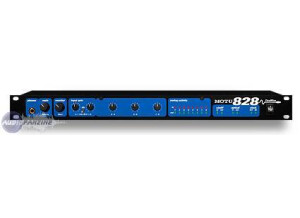
828 MKI
FireWire audio interface
-
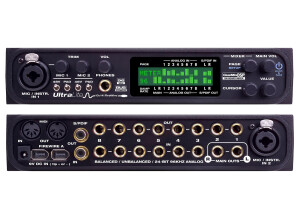
UltraLite
FireWire audio interface
-
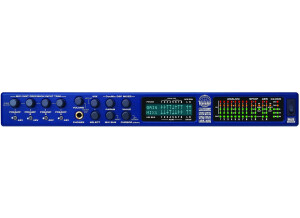
Traveler
FireWire audio interface
-
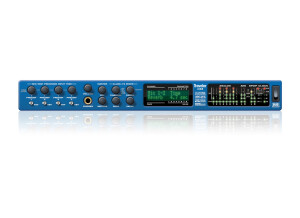
Traveler-mk3
FireWire audio interface
-
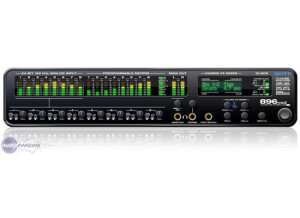
896 Mk3
FireWire audio interface
-
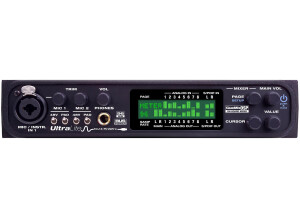
UltraLite mk3
FireWire audio interface
-
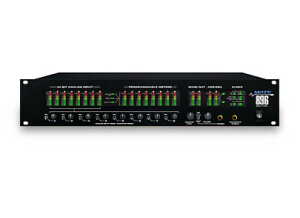
896
FireWire audio interface
-
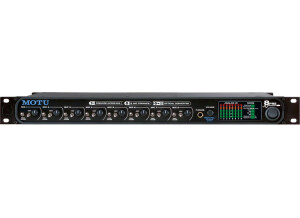
8pre
FireWire audio interface
Other categories in Audio Interfaces
Where to buy 828 Mk2?
Less










